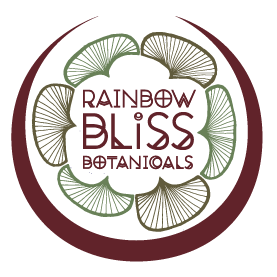There’s this plant that moves a certain way when the Arizona winds move through it. It’s not a dance, or a sway, but a shake, a vibratory yet rooted shake and shimmy often crowned with clusters of little cones that taste like medicine. Not bitter, not sweet, but just right. I munch these little cones to open airways, relieve nasal congestion, and help with stamina while hiking or wandering in the desert. Ephedra viridis is found throughout Northern Arizona and has been used by the Apache, the Navajo (who are speakers of a Na-Diné Southern Athabaskan language they call Diné bizaad), Zuni, and Hopi peoples as a stimulant tea and therapeutic medicine. I became aware of it by walking through lands that were sprinkled in it and chewed the cones out of curiosity and sure enough, my feelings supported and backed up the reported tonic effects of bronchial-dilation and enhanced energy. It is also a decongestant and affects the central nervous system. Digging into some E. viridis relatives, there is evidence that this medicine has also been used as a visionary tool. Ma Huang, yellow hemp, or Ephedra Sinica is well known throughout Traditional Chinese Medicine and contains ephedrine, pseudoephedrine, N-methylephedrine, N-methylpseudoephedrine, norephedrine, and norpseudoephedrine. These alkaloids form in an arid environment. Northern Arizona and northern Eurasia behold archaeobotanical evidence and thus insight into how traditional ways of ethnopharmacology administers this medicine. Over 60 species of Ephedra are in dry areas of Eurasia. When I say Eurasia, I specifically mean from Spain, to France into Northern Italy, to Switzerland, to Ukraine, Uzbekistan, Turkey, Kazakhstan, Russia, Mongolia, and to China. This joint-fir family of Ephedraceae can grow in coastal dunes as well as high desert, and can also burst right out of stone walls and rocky, icy earthen landscapes.
In Western Siberia and China, species like E. equisetina, E. nebrodensis, and E. shennungiana grow in arid high mountainous regions and are also cultivated for ephedrine production. In the Himalayas, a relative of Ma Huang, E. gerardiana, grew in high-mountain valleys and was used for folk medicine as a respiratory assisting bronchodilator and tool for stamina. Relatively nearby, E. kardangensis grows in the Western Himalayas in the Himachal Pradesh region in India at an elevation of 3,000m amongst pines and dry gravelly soil.*
A gorgeous and beautifully potent site of archaeo-botanical evidence of ancient use of Ephedra spp. emerged from the finding of the Shanidar cave in the 1950’s, which is in the modern village of Zawi Chemi on the Zab River in Northern Iraq. This river feeds into the Tigris river and at the time, the area was very inhabitable, rocky yet fertile, and apparently booming with humans who used plants. This cave contained the remains of eight adult and two infant Neanderthals dating from 65,000 to 45,000 years ago and were found with animal, plant, and stone tool remains. There are also two later photo-Neolithic cemeteries in the area from about 10,000 years ago that contain thirty five people. The fourth Neanderthal body that was (re)discovered in 1960, called Shanidar 4, was an adult male who was buried amongst flowers that were detected and identified via soil sample and pollen analysis. The heads of these flowering plants were placed all around his body, which was curled up in the fetal position. The pollen came from Yarrow, cornflower, horsetail, hollyhock, thistle, ragwort, grape hyacinth, and ephedra. All of these are used as anti-inflammatories, astringents, diuretics, and some as stimulants. Perhaps he was the community medicine man?
Later on in the Bronze Age civilization of Central Asia, there is more paleobotanical evidence of ephedra being used as a brew along with cannabis and poppy.
In China, many ancient burial sites have been found to contain Ma Huang. Which carries and supports that this plant is more than an anti-asthmatic. It is so revered, it needs to be taken to the afterlife. Specifically, in the Gumugou cemetery in the Lop Nor region of China, there was a custom of burying a cluster of twigs on the right side of the chest of the dead in burying rituals. Perhaps the other heart? Maybe this provided symmetry between the right and left side of the chest, one plant heart and one human heart. Just an idea..
Currently, pseudoephedrine is used as a decongestant while other extracts are used for weight loss and performance enhancement. As this plant continues to be manipulated and controlled, access to and thus cultivation of Ma Huang is becoming increasingly limited and less often prescribed in TCM. Making methamphetamine from pseudoephedrine is not a behavior with a positionality of honor for this therapeutic agent, but I also do not support laws to ban any substances.
In early September 2020, I traveled to Northeastern Arizona for a rock climbing trip. Along a deep canyon, the earth is covered in the highest density of bright & brilliant green Ephedra I’ve ever seen. Although this high desert has had a dry monsoon season, this plant thrives and maintains flexibility and intense vibrancy. Through offerings, listening, discernment and selection, I was able to harvest a gorgeous bundle of medicine to bring back down to Happy Healthy High Horny Herbs in Tempe to spread to the community with reverence as a tonic and respiratory ally.
*Information with an asterisk behind it was supported by the lecture titled “Ancient use of Ephedra species in Central and Eastern Eurasia” composed by Mark Merlin at the University of Hawai’i at Mānoa.
This photo below is south of Winslow, Arizona. In full respect and love to the Hopi people, I show this hear to recognize the land this medicine thrives in. The ephedra bushes are not the big bright green ones your eyes first settle on, but rather the smaller ones that densely cover the ground in patches all amongst the rocky soil. Arizona is truly special and needs protection in all ways. Please steward these lands, please spread awareness against mining operations, please education others about waste management..
